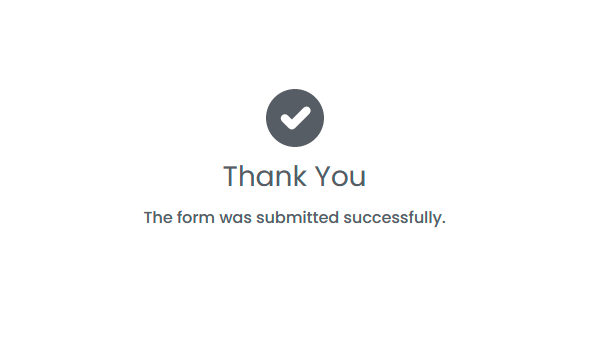IoT Platform for Telecom Operators and MSPs
AggreGate helps telecom operators and managed service providers enable the delivery of end-used IoT services and barebone IoT platform instances. These efforts are targeted to building an ecosystem of technology partners providing IoT devices and developing vertical IoT applications within the bounds of telco’s or MSP’s cloud infrastructures.
Scenario 1: Custom Solutions for Large-Scale and Medium-Scale Enterprises
This scenario assumes one-off customized product sales. Your cloud platform is used for data collection, storage, analytics, and visualization. The enterprise customers have multiple device types that should be connected both directly (for IP devices) and via IoT gateways.
The vertical solution implementation often assumes inviting a system integrator having:
- Essential industry skills (e.g., predictive maintenance of turbine generator units or refrigerator energy saving enhancement in retail networks)
- Trained and certified engineers with the IoT platform technology expertise
Your key account managers along with the salespeople of an industrial partner (system integrator/engineering company) can drive a sale of such a custom solution. Tibbo employees can also participate in the sales on behalf of our partners.
In such projects, the automated billing is not applicable. The pricing proposal and billing methods are developed individually.
There is a separate platform instance (server) provided for every customer. Multi-tenant servers are not used. In most cases, the cloud platform server is integrated into the customer’s corporate system within the project scope.
The IoT platform edge instances can operate inside gateways and perform the following tasks:
- Direct alarm messaging to local operators
- Data buffering upon the cloud connection failure
- Simple audio/video analytics (e.g., motion detection)
- IoT edge analytics based on the machine learning, etc.
Update, management and configuration of the edge platform instances is performed by the main platform server. This centralized edge gateway management is a part of the value proposition to customers having a large number of remote objects (e.g., hub sites, transforming sub-stations, fuel filling stations, etc.).
Scenario 2: IoT Application Enablement for Medium and Small Enterprises
SMBs starting an IoT project won’t find the system integrator's assistance economically-viable. Such companies have to complete the following steps on their own:
- Searching for IoT gateways and end-user devices
- Hosting the cloud servers or allocating and maintaining own servers
- Deploying the IoT platform instances
- Integrating the selected gateways with the platform
- Mastering the platform’s toolset to implement the back-end tasks (dashboard design, analytics)
The customers of this type switch to a cloud IaaS/PaaS infrastructure as long as the following conditions are fulfilled:
- The cloud IoT platform is rolled out and maintained by a telecom operator or MSP
- It’s possible to choose between different gateways pre-configured to be compatible with the platform
- There is a publicly available step-by-step guide allowing going through the whole cycle of a solution development in one day: connecting sensors to a gateway, linking a gateway to a cloud, designing dashboards and setting up analytics
- They get a reasonably priced proposal with minimal CAPEX that only includes the actual costs associated with the equipment
The technical implementation strategy of this business scenario:
- Cloud-hosted platform instances are integrated into your B2B customer portal allowing managing the services and track the resource usage
- Platform instances are also integrated into your billing system, which allows carrying out regular billing based on the following criteria:
- Device count, e.g. GPS trackers
- Tag/metric count, e.g. Modbus device registers
- Performed operations count, e.g. device access via HTTP API
- Collected events count, e.g. via MQTT
- 3-tier architecture implemented in the cloud is capable of coordinating millions of devices
The most important overall success factor here is active marketing of the IoT Cloud solution both online and during the industry events. In this case, your B2B salesforce plays a minor role since the customers can try and implement an IoT solution by themselves.
Scenario 3: IoT Application Enablement for IoT Device Manufacturers
IoT OEMs face the same challenges as smaller companies implementing their IoT projects: preparation of a cloud infrastructure, deployment and maintenance of a device management software, designing a monitoring system atop of it. The companies producing smart meters, fitness bands and pet trackers serve as good examples for the case.
It often happens that such companies start developing their own cloud system from scratch, but soon realize that the costs for its development and support are huge. However, the system they are trying to build is hardly customizable and doesn’t meet the high-profile customer requirements.
Having an option to host the IoT platform (according to PaaS model) at a predictable price comparable with the server hosting costs (i.e. 2-5 times higher, though not 10-100 times), many of such companies will employ a cloud platform from day one, the others will even give up on the software development.
In contrast to the SMB scenario, most OEM vendors develop their own unique system front-end (interface) regardless of the quality and capabilities of the Platform's UI Builder.
In a technical sense, this scenario is scarcely different from the SMB scenario. Billing and scalability are handled in the same way. However, some minor differences still exist:
- Since the equipment is in-house development, the quality of step-by-step IoT app enablement instructions is of top priority
- The quality of APIs and documentation allowing to implement a vendor-specific front-end is an important functionality of the platform’s visual UI building tools
Scenario 4: Out-of-the-Box Vertical Market Services
At some point, a data center infrastructure for the IoT platform instance deployment and scaling is already in place, and the billing/user account integration scenarios are designed, tested out and well-functioning.
The development of custom out-of-the-box IoT services (for both B2B and B2C segments) turns out to be cost-effective from this point.
Most telecoms and MSPs tend to evolve their own services in parallel to the technology partner ecosystem built around their cloud.
